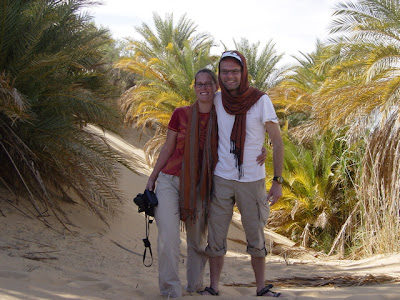We used the morning to have refreshing swim in the hotel pool. At twelve we had to check in at our cruise ship the Kasr Ibrim. The Kasr Ibrim was docked in the Sadd al Ali port on Lake Nasser near the High Dam. Many Sudanese were waiting here for the regular ferry boat to Wadi Halfa in Sudan. We boarded and checked in our room. Everything on board up to the smallest details was beautifully decorated in 1930s Art Deco style. We had lunch on board and in the afternoon our guide took is in a small motorboat to the island where the temples of Kalabsha and Beit Al Wali and the Kiosk of Kertassi are now located. All these where moved from their original location by a UNESCO organised consortium in the 60s,when the High Dam was build and the rising water treatened these temples.
Kalabsha
The temple of Kalabsha was built in the late Ptolemaic period and finished by emperor Augustus between 30 BC and 14 AD. It is dedicated to the Egyptian-Nubian composite god Horus-Mandulis and to Isis and Osiris. The a hypostyle hall leads to the inner sanctuary has beautiful reliefs. A nice detail is are the empty cartouches, left blank because it was not clear at the time which pharaoh was ruling.
Kiosk of Kertassi and prehistoric rockart
The Kiosk of Kertassi is a relatively small feature with two nice Hathor columns.
Near the kiosk are also some rock slabs with prehistoric rock carvings that were salvaged from the same, now submerged, site. Interestingly, these carvings were very similar to some of the rock art we saw earlier in the Gilf Kebir.
Beit al Wali
The temple of Beit Al Wali (= house of the holy man in Arabic) was originally build by Ramses II and dedicated to Amun-Ra. On the walls there are fine reliefs. Interestingly, one shows Ramses taking his enemies by their hair and smashing their heads.
All sites on the island were very impressive, even more so when you consider that all off them have been dismantled block by block, moved and rebuild.
skip to main |
skip to sidebar

Our Egypt and Ozz stories
Welcome to Reijsverhalen

- Jurriaan, Corine & Luka
- Perth, Western Australia, Australia
- Jurriaan, Corine and Luka live in Perth. The Reijsverhalen blog contains our experiences and photos. © Jurriaan and Corine
Links
- Jurriaan's Art Gallery
- Corine's confluence map
- Jurriaan's confluence map
- Corine's PhD Thesis
- Geer and Kees' blog on the Trans-Siberia Express (Dutch)
- Paul & Petra's blog site on Egypt (Dutch)
- Michiel and Aafke's blog site on Egypt (English)
- Ivar and Kim's blog site on Egypt (Dutch)
- Piet and Mary's blog site on Egypt (English)







